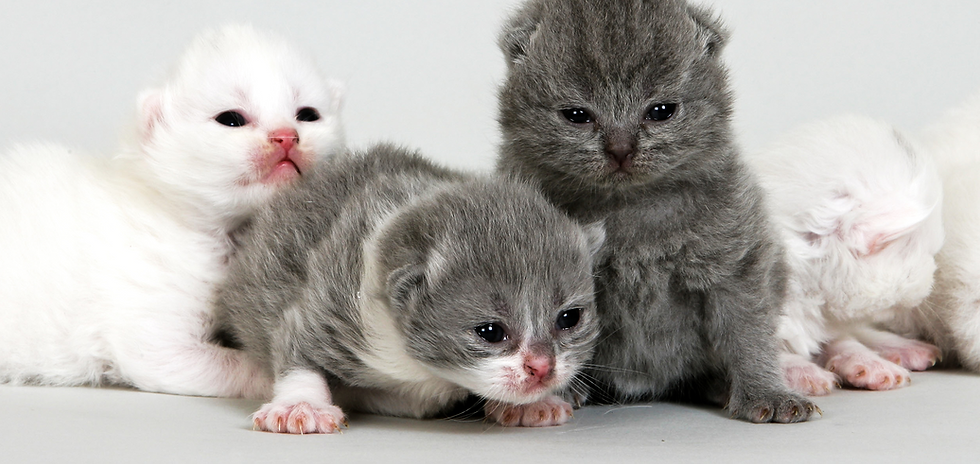

CHOOSING A STUD
The best way to find a suitable stud is to contact the breeder of your kitten, your breed club, or other breeders in the district should be able to assist you on this, Once you select the stud, you should contact the stud owner to see if he/she will accept your queen to stud.
There are some tests the stud owner may require of the queen that you need to have taken and certified by your vet (depending on the breed). Do not be afraid to ask to see the documents relating to the same tests for the stud.
It is important to choose a stud not too far away, if possible, so that you can inspect the queen’s accommodation in advance.
As soon as your queen commences to call (you will find the signs of being on call down further on this page), contact the stud owner and check that the stud is available and when to take your queen. It is sensible to have a reserve in mind in case the stud is other busy with another queen.
The stud owner will require the stud fee to be paid before the queen leaves and should provide a copy of the stud’s pedigree and details of the terms of any repeat mating if this on is not successful. It is not advisable to offer a kitten in payment. ‘Breeding terms’ can always lead to problems unless you can fully trust the stud owner or have an airtight contract for this.
Make sure that you obtain a Mating Certificate from the stud owner. You will need to show the certified date of mating stud owner signature in order to registered your kittens. If you do not get these from the stud owner, your kittens cannot be registered.
IS SHE IN SEASON
The female cat’s heat cycle is the first step in the breeding process, she will eventually come into heat (called oestrus), and the signs are unambiguous, once you know what to look for. A kitten can have her first heat as early as 4 1/2 months, so don’t fall for that old “wait until six months to spay” if your not going to breed from her.
This is the time when she'll be fertile and receptive to a male cat's advances. Cycles usually last two days on average, but are repeated approximately every two weeks thereafter unless mating takes place. Once a cat has mated and becomes pregnant, her heat cycles will end.
FEMALE HEAT CYCLE
It's not always easy to detect when the heat cycle begins since the female's vulva is obscured by fur, and there isn't normally a great deal of bloody discharge to leave tell-tale spotting on floors and furniture.
For these reasons, many breeders rely on their female's behavior to let them know when she is coming into breeding condition.
Signs include:
-
Flirting: Females become extremely affectionate, and love to rub up against their people and be petted. This behavior can reach nuisance proportions in the amount of attention they demand from you during this time.
-
Rump raising: Females in heat will tend to raise their rumps when you stroke them along their backs.
-
Tail flagging: Rump raising may be accompanied by a quick back and forth twitching of the tail. This is the way the female advertises her readiness.
-
Calling: Females in heat can be extremely vocal, calling constantly in search of male partners. Any capable male within ear shot will do their best to answer that call, although most males are not fertile until at least ten months old.
CATS MATING ACTIVITY
Cat mating is noisy, and frankly, a bit rough. Cats will even scream while they mate.
Once introduced, a pair will engage in behavior that looks more like warfare than romance.
Although the breeder should be present in case things truly get out of hand, it's better
to resist the urge to intervene and let the cat breeding commence naturally. When the
male mounts the female, he will latch onto her with his claws and frequently hold the
scruff of her neck with his teeth. The barbs on his penis act as a stimulus to encourage
the female's immediate ovulation, thus ensuring the success of most matings.
When your cat comes home from the stud she may still be calling. Make sure she has no
opportunity to escape and be mated again by the local tom who will be waiting. A litter
can be sired by more than one male, and if this happens you cannot offer a certified
pedigree for any of the kittens.
A pregnant queen will show both physical and personality changes which will first become
more evident around three weeks after mating. Learn to recognize the signs your cat may be pregnant.
Whilst you wait for the pregnancy of about 65 days to pass, read as many books as possible on cat breeding.
A very good book is the ‘Complete Book Of Cat Breeding’ by Dan Rice D.V.M.' This can be order from many online bookstores.
Keep in contact with your breeder or if you have a breeding mentor/s and they will shoulD be only too happy to help you, or if you have any serious health worries, contact your vet. It’s a good idea to let him/her know when your kittens are due because all the problems that beset human pregnancies can happen with cats, including the need for a caesarean.
Make sure you know exactly what to expect at the birth, and that you have everything ready. If anything happens that worries or concerns you don’t hesitate to seek advice as quickly as possible. The care you have taken of your queen during her pregnancy by careful feeding, worming at the correct time (taking veterinary advice if necessary), choosing the stud cat carefully and making all the correct preparations will now prove their worth and greatly increase the chances of a lovely healthy litter.






